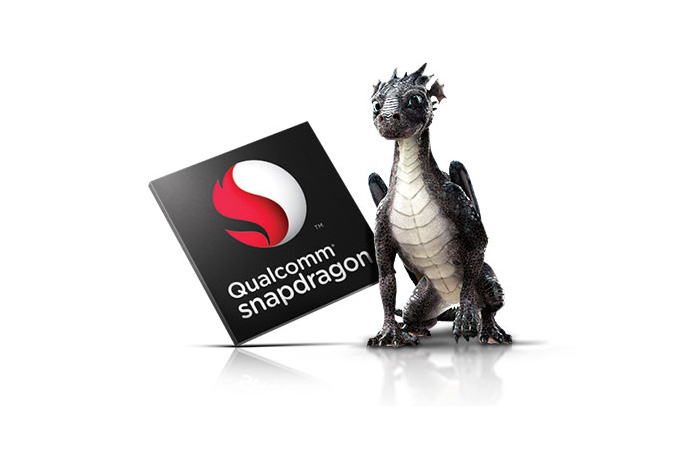Qualcomm's Snapdragon 805: 2.5GHz, 128-bit Memory Interface, D3D11-class Graphics & More
by Anand Lal Shimpi on November 22, 2013 11:00 AM EST- Posted in
- SoCs
- Qualcomm
- Smartphones
- Mobile
- Tablets
- Snapdragon 800
- Snapdragon 805

Qualcomm has had an incredible year. It wasn’t too long ago that I was complaining about Qualcomm’s release cadence, the lull between Scorpion and Krait allowed competitors like NVIDIA, Samsung and TI to get a foothold in the market. Since the arrival of Krait, the move to 28nm and the launch of monolithic AP/LTE solutions, no competitor has been able to come close to touching Qualcomm. These days the choice of integrating mobile silicon really boils down to what Snapdragon variant an OEM wants to go with. TI is out of the business, NVIDIA hasn’t seen much traction with Tegra 4 and even Samsung will ship Qualcomm silicon in many of its important markets.
Qualcomm’s Snapdragon 600 was the SoC of choice at the beginning of the year, with Snapdragon 800 taking over that title more recently. Earlier this week, Qualcomm announced the successor to the 800: the Snapdragon 805.
We’re expecting to see devices based on the Snapdragon 805 to be shipping in the first half of 2014, so Snapdragon 800 will still enjoy some time at the top of the charts.
The 805 starts by integrating four Krait 450 cores. Krait 450 appears to be an evolutionary upgrade over Krait 400, with no changes to machine width, cache sizes or pipeline depth. Qualcomm claims to have improved power and thermal efficiency, as well as increased maximum frequency from 2.3GHz to 2.5GHz. I suspect the design is quite similar to Krait 400, perhaps with some bug fixes and other minor tweaks. Qualcomm is likely leveraging yield and 28nm HPM process tech improvements to get the extra 200MHz over Krait 400. Krait 450 also adds 36-bit LPAE (Large Physical Address Extensions) to enable memory support above 4GB. This is a similar path to what we saw desktop PCs take years ago, although I'd expect the transition to 64-bit ARMv8 to happen for Qualcomm next year.
The GPU sees the bigger upgrade this round. The Snapdragon 805 features Qualcomm’s Adreno 420, designed 100% in house at Qualcomm. Adreno 420 brings about a D3D11-class feature set to Qualcomm’s mobile graphics, adding support for hull, domain and geometry shaders. Adreno 420 also includes dedicated tessellation hardware. Full profile OpenCL 1.2 is now supported. Texture performance improves by over 2x per pipe, and also gains ASTC support.
Adreno 420 is more efficient at moving data around internally. The GPU has a new dedicated connection to the memory controller, whereas in previous designs the GPU shared a bus with the video decoder and ISP.
Qualcomm insists on occluding things like shader unit counts, so all we have to report today are a 40% increase in shader bound benchmarks (implying a 40% increase in shader hardware and/or more efficient hardware).
Snapdragon 805 also features hardware accelerated decode of H.265 content. Hardware encode is still limited to H.264, but this is an awesome first for Qualcomm.
The Snapdragon 805 brings a much improved ISP. Qualcomm claims more than a 50% increase in ISP throughput (1GPixel/s class) compared to 640MP/s for Snapdragon 800. The 805 leverages its Hexagon DSP to deliver this level of performance. Qualcomm lists no change in DSP architecture between the 805 and 800.
Lastly, we see Qualcomm move to a 128-bit wide LPDDR3 memory interface for Snapdragon 805. With support for LPDDR3-1600, the Snapdragon 805 features up to 25.6GB/s of peak memory bandwidth. It’s interesting to see Qualcomm go this wide just as Apple moved back down to a 64-bit wide interface. Qualcomm and Intel will be the only two shipping such a wide memory interface in the ultra mobile space come next year (although I do expect Apple to return to a wider memory bus at some point).
All of this makes for one beefy SoC, and a continuation of Qualcomm’s leadership in this space. I doubt we’ll see any slowing of Qualcomm’s roadmap after the 805 though. TSMC expects to be shipping 20nm wafers by the end of next year, and I wouldn’t be surprised to find a 20nm successor to the 805 in late ’14/early ’15. Remember that on the last process node shift we got Krait, I wonder what we’ll get this time.










105 Comments
View All Comments
blacksheep242 - Monday, November 25, 2013 - link
Hopefully now Snapdragon can compete with the PowerVR solution that Apple uses.LemmingOverlord - Monday, November 25, 2013 - link
hi guys,How many of the in-house team doing Adreno graphics at Qualcomm came originally from the Imageon team? Does it still have a lot of "ATI DNA"?
Cheers
oranos - Tuesday, November 26, 2013 - link
This is the exact problem with chipset manufacturers announcing new technology ahead of time. It's a complete conflict of interest for people in the market for new flagship phones.mjh483 - Sunday, December 1, 2013 - link
Every time they release a new chip I wonder who will actually take full advantage of the horsepower.Wolfpup - Tuesday, December 17, 2013 - link
Is Qualcom actually *leading* anything? Maybe it's because they really give us no information on anything, but my impression is that their best CPUs are still A9+, while competitors are shipping A15 (Nvidia) or even better than that (Apple).And same issue with their graphics-they give us no information, so I have to assume they're not very good.